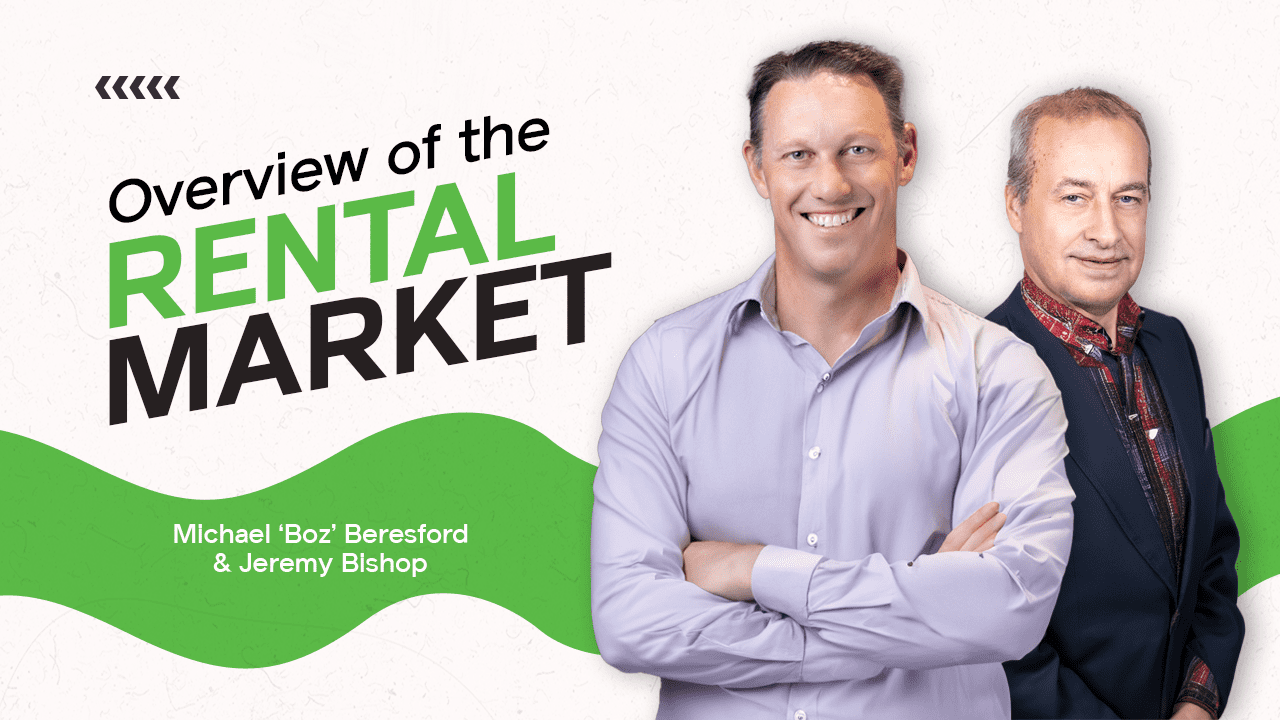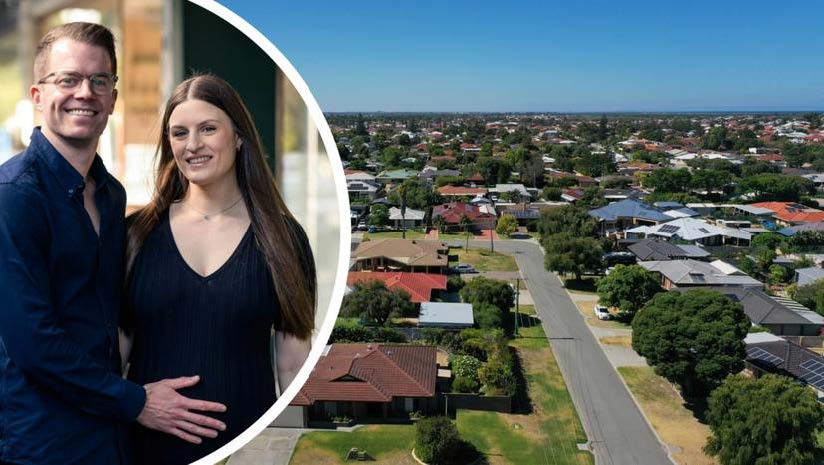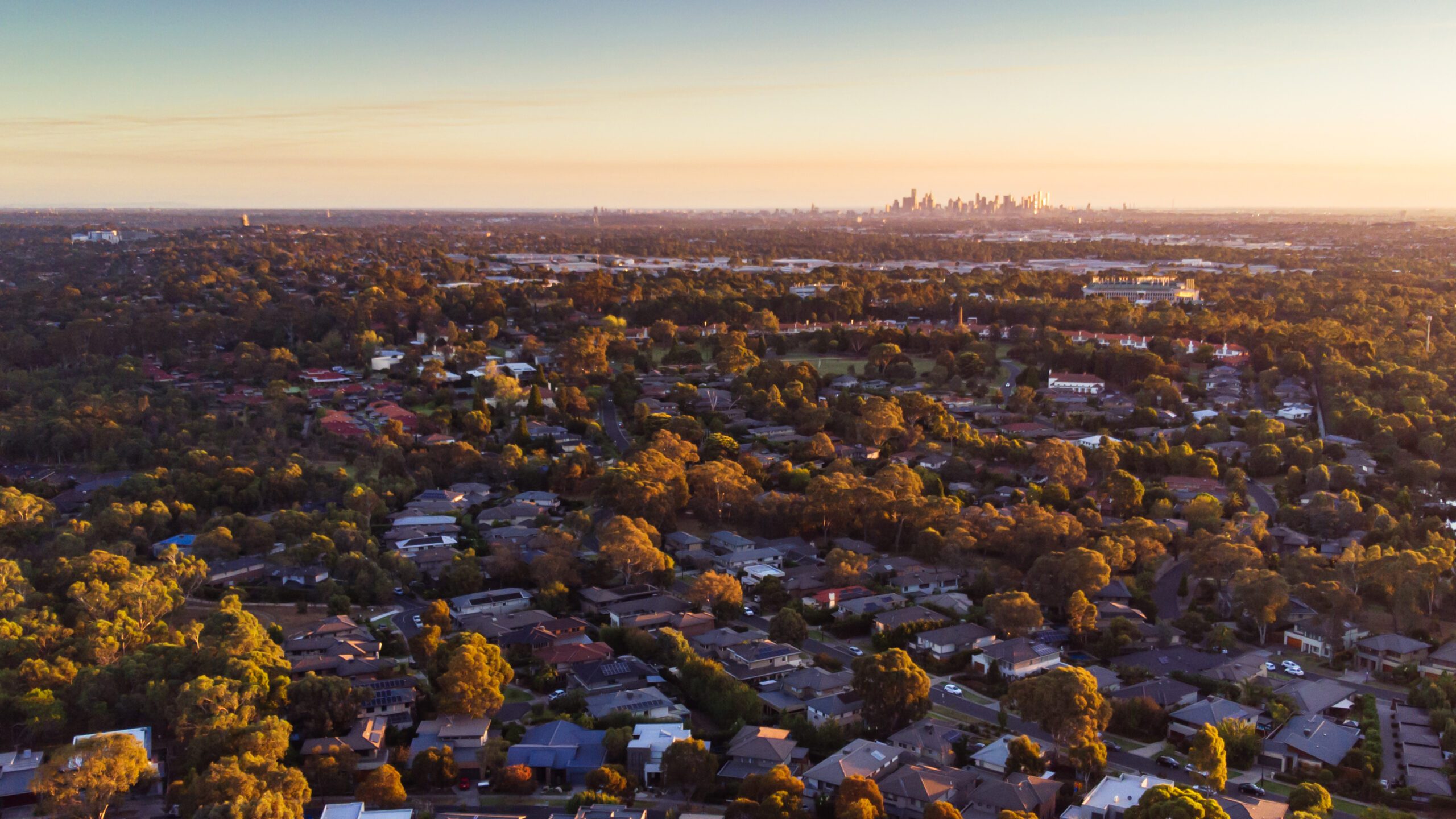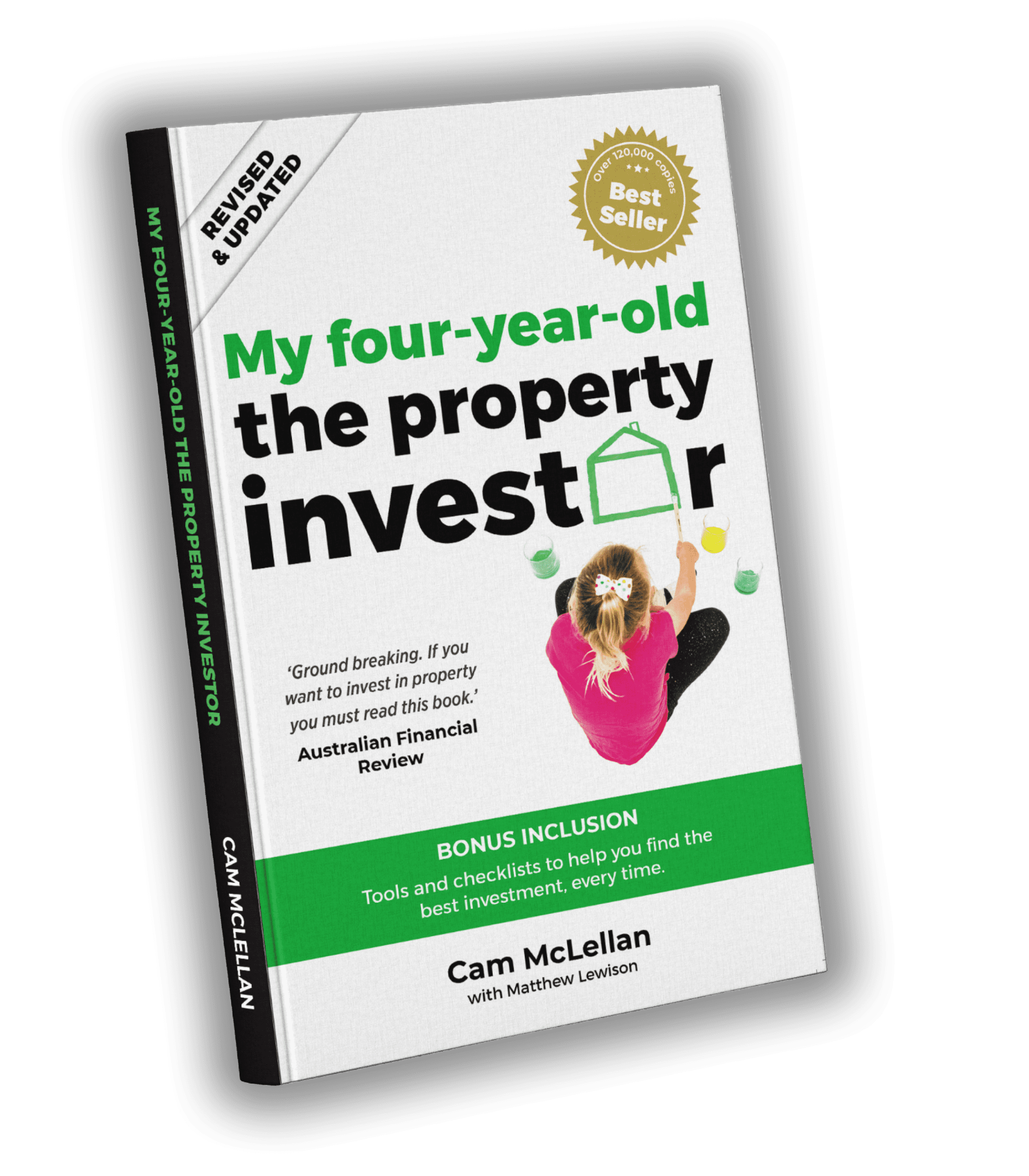Would you drive a car blindfolded? So why invest without a strategy?
Boz and Cam ask the deep and meaningful questions to analyse what is required to create the a formula for investment success.
*Transcript Below*
Subtitles available*
Transcript
Michael: Hey, guys, Michael Beresford here.
Cam: Cam McLellan.
Michael: Welcome to today’s Wealth WOD, our Workout Of the Day. What we’re gonna be going through today is the first part of our property selection process. Cam there’s nine and a half million properties.
Cam: It’s going to be about 10 million properties. Obviously the housing industry is pumping along fairly nicely. Has been for a number of years.
Michael: Take all of our listeners and viewers through how we select the right one.
Cam: Alright. When I started considering investing, I looked at the majority of people investing and how they select property, and to me it was literally like driving a car blindfolded. There was no rational behind it, there was throwing darts at a dartboard and hoping you picked the best property. As Michael said, nearly 10 million properties in Australia, how do you go through? You can’t physically go through and get property A and compare with property B, get the winner out of that, and then property C and compare that, and do that through the 10 million properties physically. There’s not enough time. I wanted a way that regardless of market cycle, I wanted to be able to quickly identify which is the best property investment me at that point in time.
Cam: The only way to do it that I could conceive was through a process of elimination. I came up and developed with Matt Lewison, some assistance with Michael, what we’ve fine tuned down to be calling the MAP process, which is Market, Area, Property. So it’s the exact opposite way the majority of people pick property. I’ll do a quick illustration for you so you can see it. There’s your investment property that you need to find. First we need to check out the areas, the product of that we indicate in the markets. So, hence, market, area, property.
Michael: So Sydney’s seeing some great growth, I’ve been thinking about investing for a while, and now I’m feeling confident to able to buy into a capital city. How do I work out whether or not Sydney makes the most sense?
Cam: Alright. We’ll consider the concept of knocking out capital city markets that are not good for investment at that point in time. Sydney has seen some great growth over the last five years. 10 years to that it was sitting flat wasn’t it?
Michael: Yeah.
Cam: So there was probably basically no growth in Sydney. If you asked five years ago, Sydney-siders how they feel about property they would say property investing sucks, because the market is that flat for so long. They had forgotten that growth was a thing, and then all of a sudden it’s taken off, and Sydney-siders are popping champaign and party poppers and enjoying wealth, and so they should. Why I consider one of the worth investing markets, the capital city markets, I invest in Sydney myself. That’s a strange thing and have Sydney clients who have more than half their clients from Sydney, love Sydney and can’t conceive, “How could you possibly not?”.
Cam: I use Sydney as a lead market indicator. The reason for that is we look at the different dynamics around each capital city market, and what drives those capital city markets. Sydney and Melbourne are driven by the same fundamentals, and that is the economy, business. The reality is Sydney is a stronger business hub, so it gets growth first historically if you look at historic charting, and then Melbourne tends to follow, which is exactly what we’re saying.
Cam: Once Sydney started to kick we started driving clients into Melbourne and still Brisbane’s looking favorable, but Brisbane and Perth work off very different drivers also. Can you tell us what they’re market
Michael: Brisbane’s getting a more end of it, [inaudible 00:03:28] in the proximity to Asia-Pacific, but still heavily tourism focused. Perth obviously heavily mining focused. There’s more to those capital cities than just tourism and mining, but they are the pre-dominate industries in those two capitals.
Cam: Cool. Want to cover this one?
Michael: In summary, one of the things that help us determine which capital city market is the best place at any point in time.
Cam: We’ve got an analytics team that go through and analyze each capital city market at the moment. We have a lot of different economic and governmental reports, which basically tell what’s going on in each capital city market, population growth. What we’re looking for in these capital city markets, and I’ve put the cheat sheet in the back the [inaudible 00:04:07] book for you. What we look at is the last number of years growth. If we’ve had multiple years with double digit growth, you should start to think that the market’s gonna cycle up and we’ll be getting to sort of a peak. We are gonna want to try to get the last couple of years growth in any capital city market. We want to get it to start and ride that wave up, and then take our money, and move it to another capital city, to another capital city, makes sense? You’re riding the perfect storm or the perfect wave of property investment. So market growth.
Cam: Constant population growth: I’ve got some stats in here, the Australian Bureau of Statistics, you can get the stats on population growth forecast and population growth. The abs.gov.au is a terrible website. It’s horrendous to find your way around. It’s got a really cool search function on there so you can actually send through a request and they’re really good at getting back to you. So, rather than search around the site yourself, flew through a note to them, and they’ll shoot you the detail back.
Cam: Unemployment rates: when people feel confident in their job, they buy houses. Pretty basic math. Then from that we look at the different markets and we try and work out whether it’s in a boom, it’s in a decline or a correction phase, stagnation, or the start of recovery. Then we examine whether that’s a market worthy of investment in point in time. So, tick, tick.
Michael: So really, in summary, we’re looking for supply, demand, demands driven by population growth, which is [inaudible 00:05:32] in affordability, and median house prices to determine that we’re buying into a market that’s gonna move up.
Cam: Correct. So that’s the market phase. That’s stage one of Market, Area, Property. We haven’t even started considering what the house is we’re gonna buy in this stage. We haven’t considered the suburb or the growth corridor. All we’re doing is knocking out capital cities so the process of elimination is taking out large portions of those 10 million options. Yeah? Make sense? Next time we’re gonna get into that area. Happy days.
Michael: We’ll see you next time.








